Jeep Compass vs Mercedes GLB – Performance, range & efficiency compared
Both models have their strengths – but which one suits you more?
Compare performance, efficiency, price and space directly: Jeep Compass or Mercedes GLB?
Here’s where it gets real: The technical differences in detail
Costs and Efficiency: When it comes to price and running costs, the biggest differences usually appear. This is often where you see which car fits your budget better in the long run.
Jeep Compass has a somewhat advantage in terms of price – it starts at 34200 £, while the Mercedes GLB costs 40500 £. That’s a price difference of around 6309 £.
Fuel consumption also shows a difference: the Jeep Compass manages with 2 L and is therefore clearly more efficient than the Mercedes GLB with 5.60 L. The difference is about 3.60 L per 100 km.
Engine and Performance: Power, torque and acceleration are the classic benchmarks for car enthusiasts – and here, some clear differences start to show.
When it comes to engine power, the Mercedes GLB has a clearly perceptible edge – offering 320 HP compared to 240 HP. That’s roughly 80 HP more horsepower.
In acceleration from 0 to 100 km/h, the Mercedes GLB is noticeable quicker – completing the sprint in 5.50 s, while the Jeep Compass takes 7.30 s. That’s about 1.80 s faster.
In terms of top speed, the Mercedes GLB performs slightly better – reaching 250 km/h, while the Jeep Compass tops out at 200 km/h. The difference is around 50 km/h.
There’s also a difference in torque: the Mercedes GLB pulls slightly stronger with 400 Nm compared to 345 Nm. That’s about 55 Nm difference.
Space and Everyday Use: Beyond pure performance, interior space and usability matter most in daily life. This is where you see which car is more practical and versatile.
Both vehicles offer seating for 5 people.
In curb weight, the Jeep Compass is minimal lighter – 1575 kg compared to 1640 kg. The difference is around 65 kg.
In terms of boot space, the Mercedes GLB offers slight more room – 570 L compared to 550 L. That’s a difference of about 20 L.
In maximum load capacity, the Mercedes GLB performs clearly perceptible better – up to 1805 L, which is about 418 L more than the Jeep Compass.
When it comes to payload, Mercedes GLB barely noticeable takes the win – 500 kg compared to 470 kg. That’s a difference of about 30 kg.
All in all, the Jeep Compass shows itself to be only a minor advantage and secures the title of DriveDuel Champion.
It impresses with the more balanced overall package and proves to be the more versatile companion for everyday use.
Jeep Compass
The Jeep Compass combines a rugged aesthetic with modern sophistication, making it a standout choice in the compact SUV segment. Its robust design is complemented by a comfortable interior that offers ample space and cutting-edge technology for a seamless driving experience. Whether tackling urban environments or venturing off-road, the Compass provides versatility and reliability, embodying the adventurous spirit synonymous with the Jeep brand.
details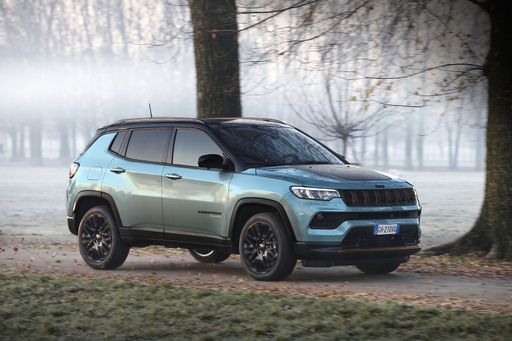 @ media.stellantis.com
@ media.stellantis.com
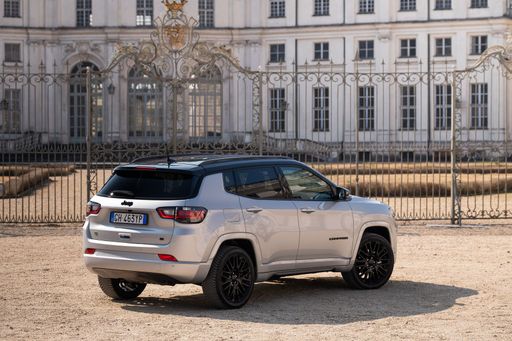 @ media.stellantis.com
@ media.stellantis.com
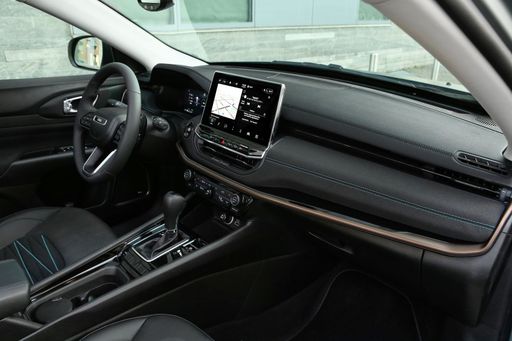 @ media.stellantis.com
@ media.stellantis.com
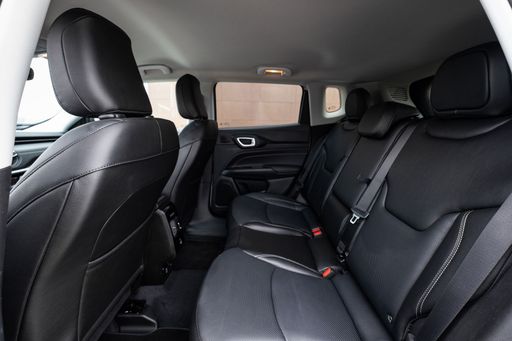 @ media.stellantis.com
@ media.stellantis.com
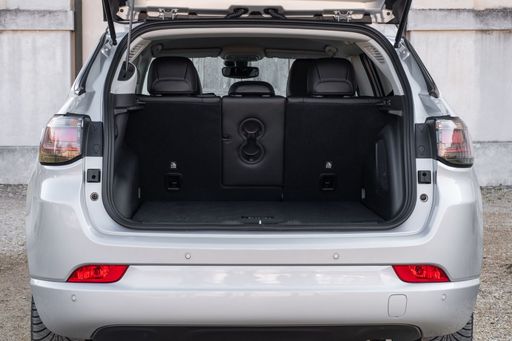 @ media.stellantis.com
@ media.stellantis.com
Mercedes GLB
The Mercedes-Benz GLB exudes a robust yet sophisticated presence, combining the versatility of an SUV with the elegance the brand is renowned for. Its spacious interior is thoughtfully designed to accommodate modern lifestyles, offering flexibility and comfort for both drivers and passengers. With advanced technology seamlessly integrated throughout, the GLB ensures a driving experience that is both dynamic and intuitive.
details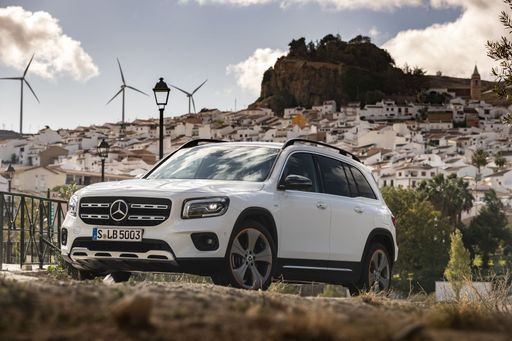 @ group-media.mercedes-benz.com
@ group-media.mercedes-benz.com
 @ group-media.mercedes-benz.com
@ group-media.mercedes-benz.com
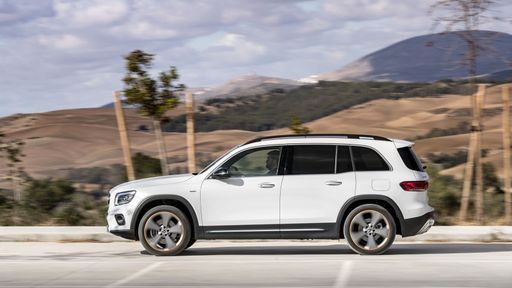 @ group-media.mercedes-benz.com
@ group-media.mercedes-benz.com
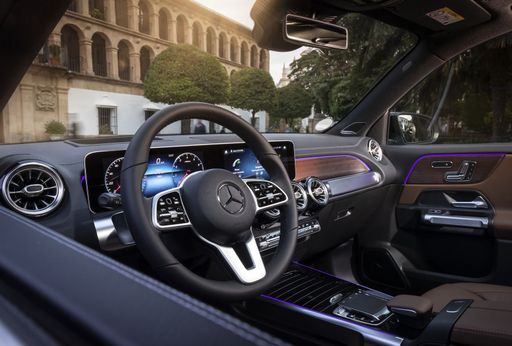 @ group-media.mercedes-benz.com
@ group-media.mercedes-benz.com
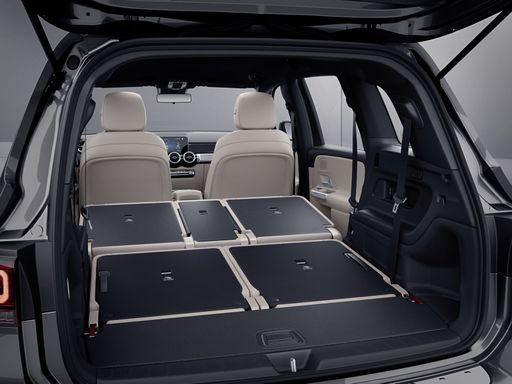 @ group-media.mercedes-benz.com
@ group-media.mercedes-benz.com

|

|
|
|
|
Costs and Consumption |
|
|---|---|
|
Price
34200 - 46900 £
|
Price
40500 - 65300 £
|
|
Consumption L/100km
2 - 5.9 L
|
Consumption L/100km
5.6 - 9 L
|
|
Consumption kWh/100km
17.50 kWh
|
Consumption kWh/100km
-
|
|
Electric Range
36 - 500 km
|
Electric Range
-
|
|
Battery Capacity
74 kWh
|
Battery Capacity
-
|
|
co2
0 - 133 g/km
|
co2
146 - 204 g/km
|
|
Fuel tank capacity
36 - 55 L
|
Fuel tank capacity
52 - 60 L
|
Dimensions and Body |
|
|---|---|
|
Body Type
SUV
|
Body Type
SUV
|
|
Seats
5
|
Seats
5
|
|
Doors
5
|
Doors
5
|
|
Curb weight
1575 - 2198 kg
|
Curb weight
1640 - 1820 kg
|
|
Trunk capacity
420 - 550 L
|
Trunk capacity
565 - 570 L
|
|
Length
4404 - 4552 mm
|
Length
4634 - 4650 mm
|
|
Width
1819 mm
|
Width
1834 - 1850 mm
|
|
Height
1629 - 1675 mm
|
Height
1665 - 1692 mm
|
|
Max trunk capacity
1230 - 1387 L
|
Max trunk capacity
1800 - 1805 L
|
|
Payload
465 - 470 kg
|
Payload
500 kg
|
Engine and Performance |
|
|---|---|
|
Engine Type
Petrol MHEV, Plugin Hybrid, Electric
|
Engine Type
Petrol MHEV, Diesel
|
|
Transmission
Automatic
|
Transmission
Automatic
|
|
Transmission Detail
Dual-Clutch Automatic, Automatic Gearbox, Reduction Gearbox
|
Transmission Detail
Dual-Clutch Automatic
|
|
Drive Type
Front-Wheel Drive, All-Wheel Drive
|
Drive Type
Front-Wheel Drive, All-Wheel Drive
|
|
Power HP
130 - 240 HP
|
Power HP
116 - 320 HP
|
|
Acceleration 0-100km/h
7.3 - 10.3 s
|
Acceleration 0-100km/h
5.5 - 11.5 s
|
|
Max Speed
180 - 200 km/h
|
Max Speed
188 - 250 km/h
|
|
Torque
230 - 345 Nm
|
Torque
230 - 400 Nm
|
|
Number of Cylinders
4
|
Number of Cylinders
4
|
|
Power kW
96 - 177 kW
|
Power kW
85 - 235 kW
|
|
Engine capacity
1199 - 1469 cm3
|
Engine capacity
1332 - 1991 cm3
|
General |
|
|---|---|
|
Model Year
2024 - 2025
|
Model Year
2025
|
|
CO2 Efficiency Class
D, B, A
|
CO2 Efficiency Class
E, F, G
|
|
Brand
Jeep
|
Brand
Mercedes-Benz
|
What drivetrain options does the Jeep Compass have?
The Jeep Compass is available as Front-Wheel Drive or All-Wheel Drive.
The prices and data displayed are estimates based on German list prices and may vary by country. This information is not legally binding.
